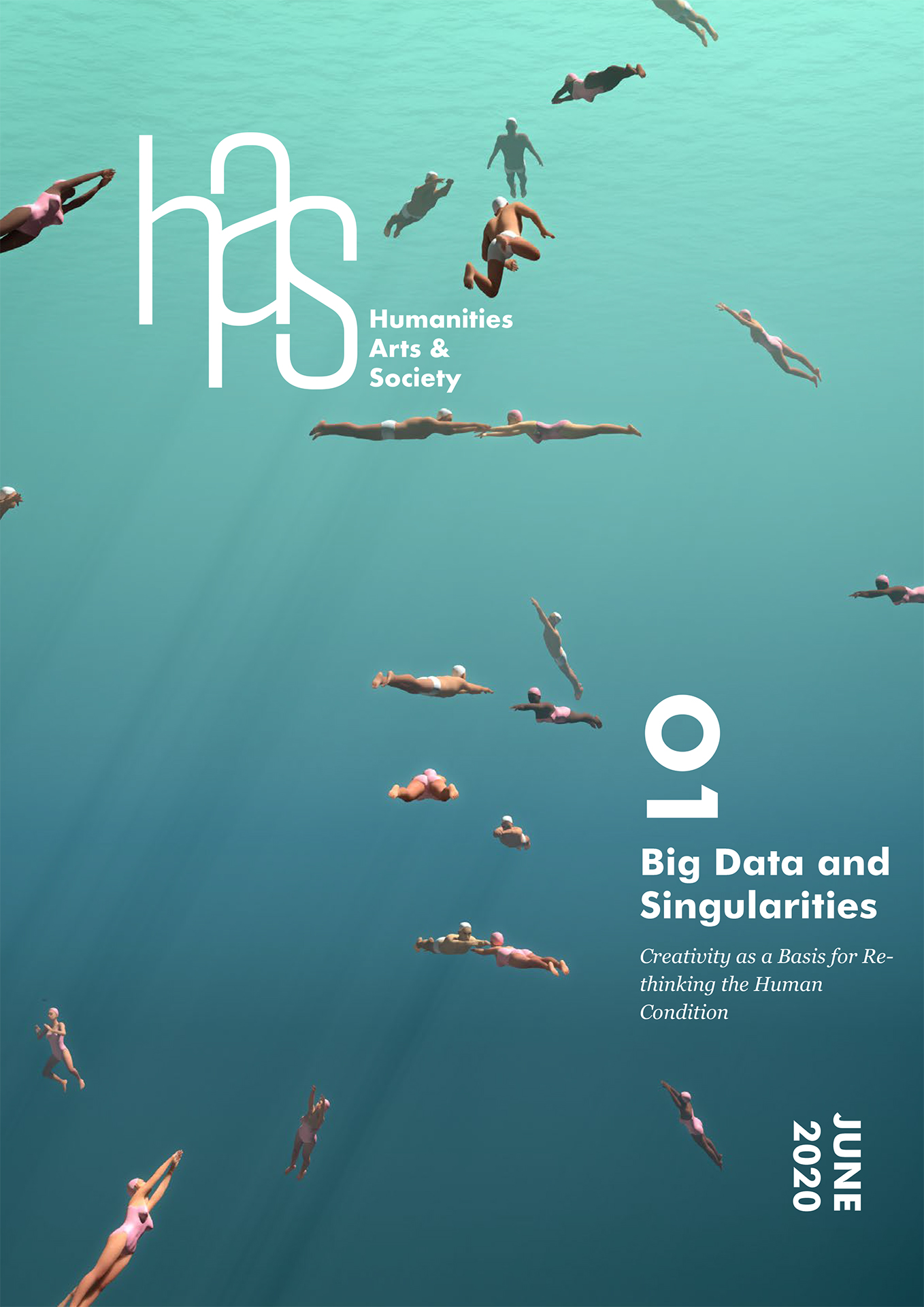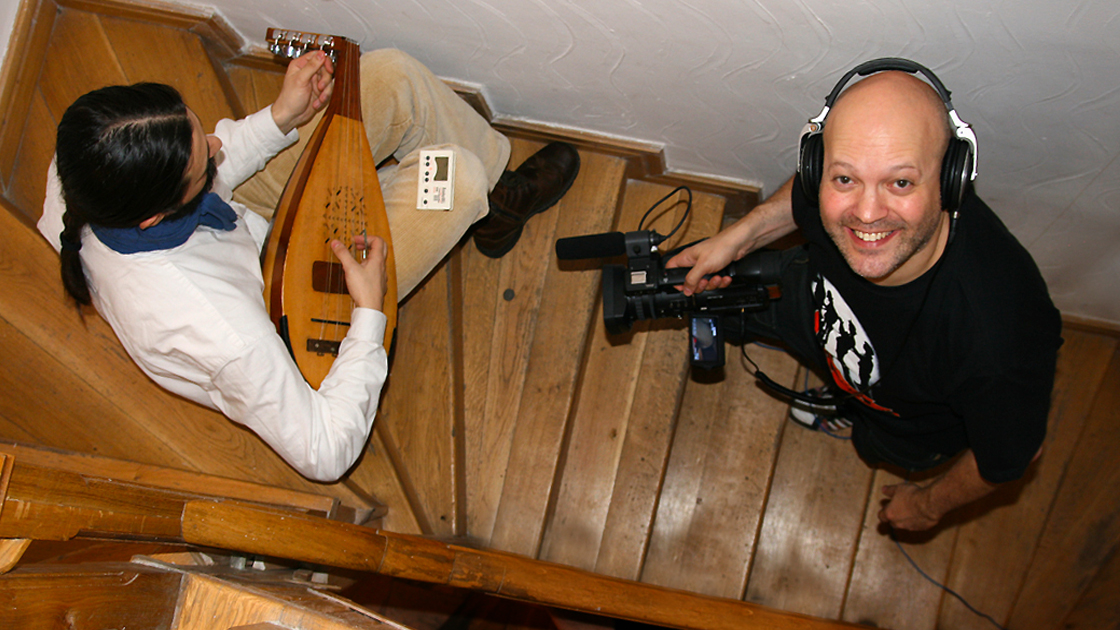
As French filmmaker Jean-Luc Godard once said: “It’s not where you take things from, it’s where you take them to.” I’ve followed that ethos throughout my career, particularly since much of my work involves audio-visual sampling—the art of taking snippets of music, film, and TV and assembling them into new and different hybrid forms. It’s something I’ve been doing for over two decades, from live performances to museum installations.
This passion for mix-and-match culture led to the creation of Orchestra Of Samples, a ten-year project that samples and combines recordings of musicians from around the world in unique audio-visual performances. For me, the project is a creative way of ignoring barriers and bringing people together in a dialogue between different musical cultures. Each show is the product of thousands of hours of recordings. We’ve travelled the world, filming and recording all kinds of musicians playing all manner of instruments, from a gaita flautist in Colombia to dombyra players in Kazakhstan. We’ve met and worked with hundreds of talented performers in over thirty countries—a process that has been massively enriching.
How did such a massive, globe-spanning endeavor come about?
The project’s origins lie in the rise of audio-visual sampling, a cultural trend I’ve been involved in for over twenty years. Before creating Orchestra Of Samples, I spent more than a decade playing at in- ternational festivals and clubs with Addictive TV, performing dance-music-based audio-visual remix sets, sampling movies,music videos, and TV.
Our many travels, and the performers we met along the way, inspired the idea of using this life on the road to collaborate with as many musicians as we could. So, from 2010, we started taking a video camera and microphones with us everywhere we went, meeting up with and recording local musicians. One rule was that we wouldn’t sample performances of their own work or famous songs, but always just improvisation—with a little direction and guidance. From across Europe and parts of South America to East Asia and West Africa, we travelled, recording in remote desert locations, hotel rooms, rooftops, parks, back stages, castles, monasteries, and of course, the occasional recording studio.
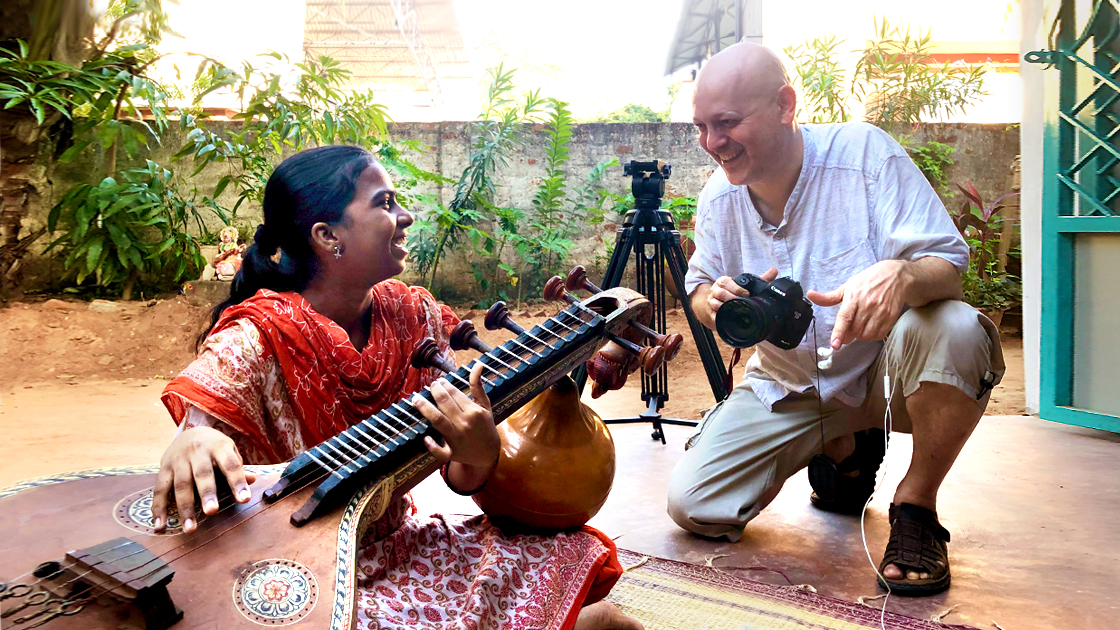
Notable places we’ve been fortunate enough to visit and conduct recording sessions in include Cairo during the 2011 Egyptian revolution—the British Council supported us in performing at an event there during a time when many artists weren’t travelling there. In Germany, we recorded a laudable rapper who runs the Who Am I Creative Academy, combining social work with a rap school, encouraging locals and migrants—particularly from Syria—to collaborate and produce hip-hop. Ndem village in Senegal, a couple of hundred miles East of the capital Dakar, was a place where, to stem an exodus to the cities, the village leaders encouraged locals to develop their craft skills, then launched an eco-friendly company to sell the items they make. This year, in a similar aspiration of communal life and sustainability, we recorded in Auroville, the unique experimental township in India. Founded in the late 1960s and dedicated to the idea of human unity, it attracts artists, scientists, and creative thinkers from around the world.
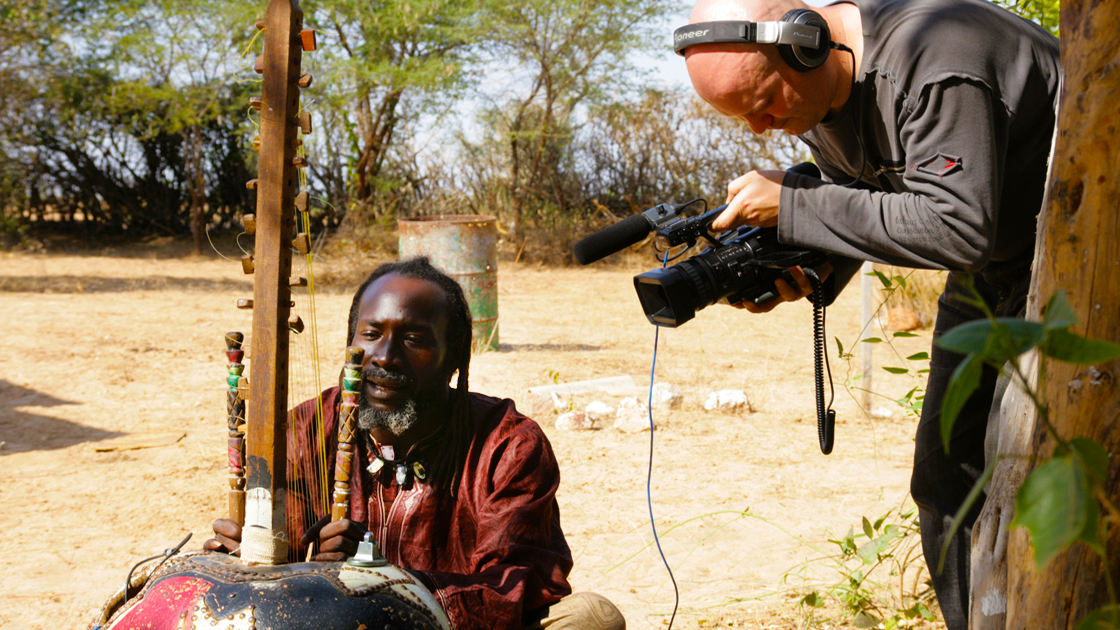
In the early days of our project, as we built up the archive of samples, we knew that melding so many different musicians, instruments, and styles into a cohesive vision would be a huge, piecemeal undertaking. We weren’t even sure it would work when we began, but slowly and surely, gig after gig, tour after tour, one pop-up recording session after another, we built a substantial audio-visual archive—the kind of major undertaking usually left to museums!
We began grouping recordings by country and tagging them by instrument, sometimes with a musical description and often with rough notations of tempos and keys, making them easily searchable. The amount of data grew exponentially, and soon we were storing terabytes of material. But this wasn’t a digital archive of anonymous recordings—there was a personal connection to every musician involved. Each sample has a story behind it, and this human element was, and remains, the lifeblood of the project.
After listening to hundreds of hours of recordings, we began combining samples, juxtaposing instruments that would never normally be heard together. The improvisational nature of each recording means that there is no common key, and the musicians don’t hear each other. So it’s a real challenge, but an inspiring one, to compose tracks from such varying musical and tonal extremes, creating melodies and riffs from samples that are not commonplace or easy “bedfellows.” Our creative process is simply to just see which samples work together.
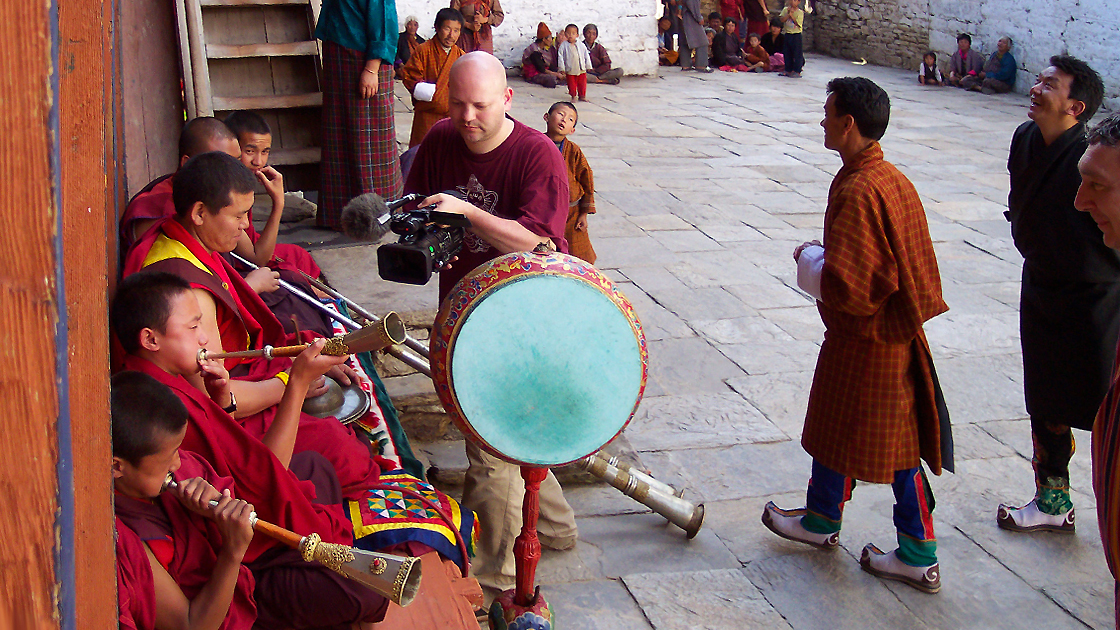
At every step of the process, from researching musicians to composing, we keep curious and open minds, experimenting with different and unexpected combinations of instruments and sounds to create something new. This open-minded approach is a crucial part of our creative process. We try not to be constrained by conventional boundaries, and the more our archive grows, the more chances there are of creating improbable but satisfying musical matches. It’s a very unconventional approach, but also a playful way of working. I often describe our methodology as being like assembling a massive jigsaw puzzle with no picture to refer to—you must use trial and error to work out which pieces fit together. Slowly, piece by piece, it will start to make sense.
Making music in this way is far more than just an interesting technical exercise. In splicing these samples, we make connections between people in different parts of the planet that have never met, yet who are now recontextualized to play together. Christophe Rosenberg from the Cité de la Musique in Paris described our method perfectly in an interview with a local Parisian newspaper when he said, “l’artiste au coeur du projet”—the musician is at the heart of the project.
We’re extremely grateful to all of the artists who have given us carte blanche to use the recordings. Musicians are used to having a degree of control over their work, but that is something they forego with Orchestra Of Samples. Hundreds of musicians have trusted us to let the samples lead us to where the samples want to go—patterns emerge organically, and we never force the music to adhere to pre-existing ideas or structures. Being involved in a project so outside the musical norms is a leap of faith for everyone involved. Lætitia Sadier from the group Stereolab, who sang on the project’s track “Beachcoma,” summed this up perfectly in an interview with the British arts magazine Rooms, saying, “It’s quite daring; to build tracks in this fashion, one must have an incredible amount of trust in them and relinquish the desire for absolute control. I was really seduced by the way they work, in collecting bits here and there throughout the world and finding their matches.”
For the many traditional musicians Orchestra Of Samples records, a key motivation for taking part is to expose the lesser-known instruments they play to wider audiences, to some degree helping to preserve their cultural existence. For instance, in the Vosges Mountains of France, we recorded Christophe Toussaint, who makes and plays the epinette, a rare 16th century stringed instrument he carves from the wood of mountain trees.
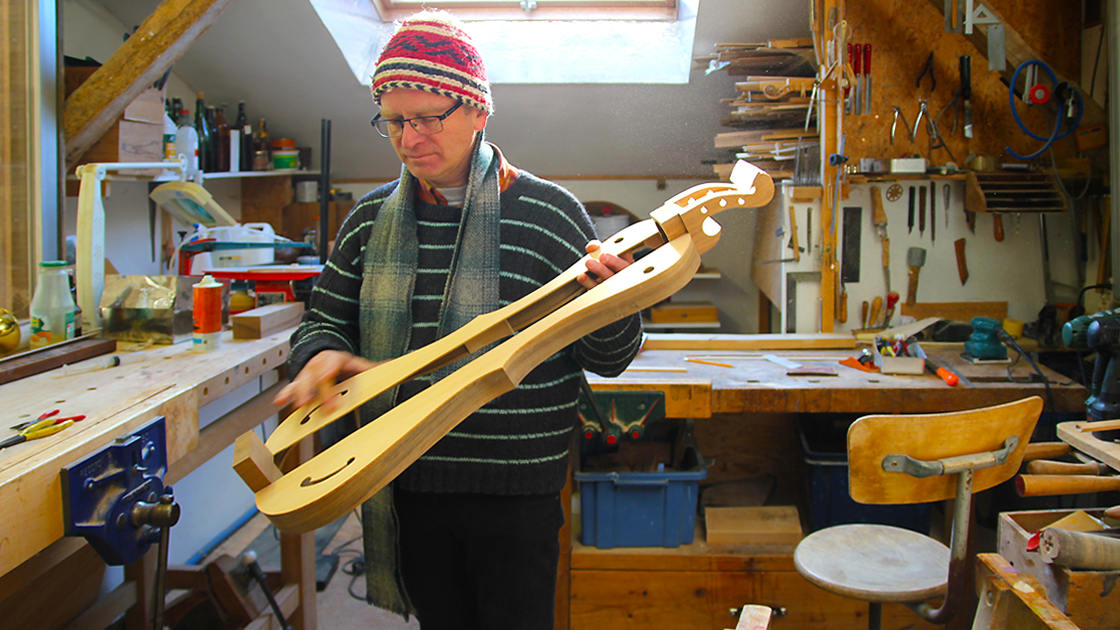
In the UK, we were also lucky enough to work with the profoundly deaf percussionist Dame Evelyn Glennie, who has amassed a museum-like collection of over 2,000 traditional and unconventional percussion instruments from around the world, and has personally mastered more than 1,000 of them. Recording and performing the show with her was an absolute honor.
In Mexico, we recorded Humberto Alvarez, an ethnomusicologist and specialist in ancient instruments, who played a kind of stone xylophone by laying out naturally tuned rock fragments he had assembled over many years. He believes this is one of the first tangible instruments human beings ever played.
Meeting such highly talented and idiosyncratic musicians, and discovering the fascinating instruments that they play, has made this project one long “live-in-the- field” ethnomusicological study. As part of our drive to spread the word about these traditional musical forms, every session is documented on our extensive project blog with photos and introductions to the musicians and their instruments, and often the style of music they play. It has become an encyclopedic index to the project, mapping and sharing our discoveries of instruments and artists around the world. But despite the breadth and depth of our archive, we know we’ve still only scratched the surface of the musical forms and instruments that are out there.
As well as researching traditional and rare instruments, we’ve also recorded many experimental and homemade instruments created by artists striving to produce new types of music and sound. These have ranged from British musical inventor Henry Dagg, creator of the enormous Sharpsichord Björk used in her Biophilia tour, to the amazingly talented Brazilian eco- group Patubatê, who we recorded in Brasília. They play traditional Brazilian rhythms with percussion instruments made of junk and recycled scrap—everything from car exhaust pipes to saucepans.
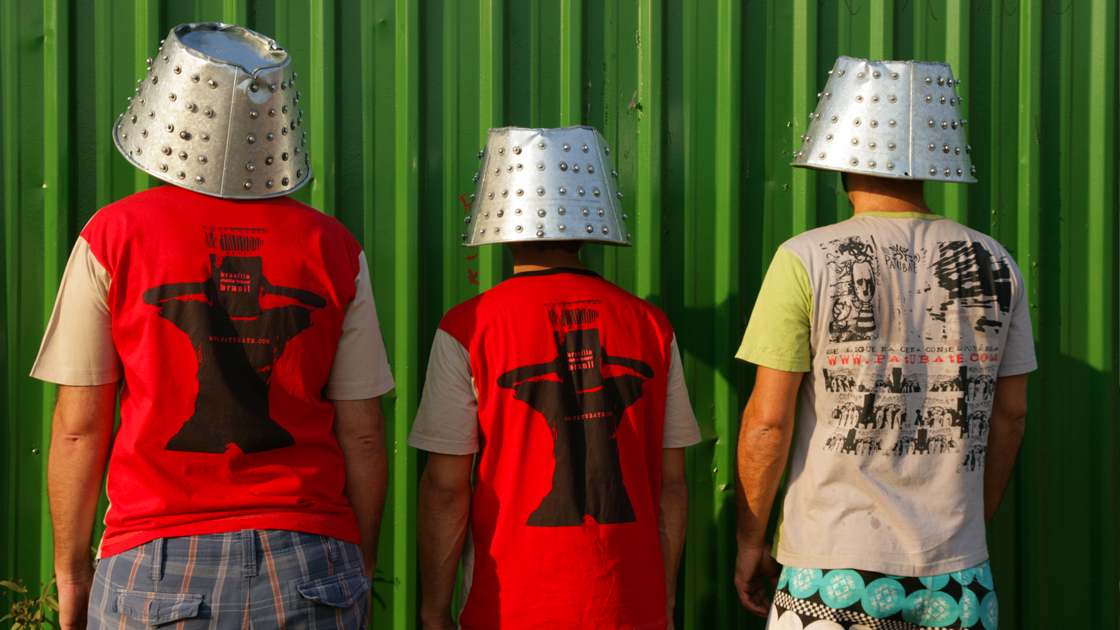
A legendary musical instrument maker I was privileged to meet in 2013 was the late Bernard Baschet, who in the 1950s, with his brother Francois, invented a range of instruments called Baschet Sound Sculptures, which we recorded in their studio with Francesco Russo, who manages their instruments. The best known of these is the Cristal Baschet, which has been used by artists including Daft Punk, Jean-Michel Jarre, and Damon Albarn, and is played with a technique similar to running a damp finger round the top of a wine glass. We also worked with Nicolas Bras, another French musician, inventor of many crazy and beautiful instruments and the curator of the hugely popular Facebook group Rare & Strange Instruments; he performed on the show with us during a tour of the project. And our long-time collaborator Alejandro de Valera, who has been involved with Orchestra Of Samples as both performer and writer from the very start, also happens to live in France. He’s a virtuoso on the fretless guitar and, that being such a specialized instrument, he builds his own. He recently made a small portable fretless guitar we could fly with in our hand luggage for a performance in Morocco!
The culmination of all our research, archiving, and recording has always been live performance, and we try to perform with the artists we’ve recorded when we return to the city or country where their sessions took place. Taking part in an Orchestra Of Samples performance is a very different experience for the musicians, who get to interact with other sampled artists on screen. For audiences, meanwhile, the live performance element makes for a more rounded and complete mixed-media experience.
One that sticks in my mind was our performance at the UK’s WOMAD festival. Afterwards, we received many social media messages saying the show had been a musical education. Some were even from parents whose children had loved seeing, as well as hearing, all the different instruments on the big screen.
Touring the show has taken us from outdoor festivals such as Glastonbury in the UK and Pirineos Sur in Spain, to some wonderful and prestigious art venues, including the Erarta Museum of Contemporary Arts in St. Petersburg and the Centro Nacional de las Artes in Mexico City. When possible, we love to share stories with our international audiences, giving talks on how we created the project.
As we’ve had a few French partners supporting the project, we’ve naturally performed in Paris many times, at art centres including Le Cube and Canal 93, as well as institutes such as the Centre Pompidou, La Seine Musicale, and the Musée du Quai Branly. The latter contains an amazing collection of instruments and artefacts from indigenous cultures of Africa, Asia, and the Americas, and being asked to perform there was a real endorsement of what we want to achieve—to create music that both builds on and celebrates cultural diversity.
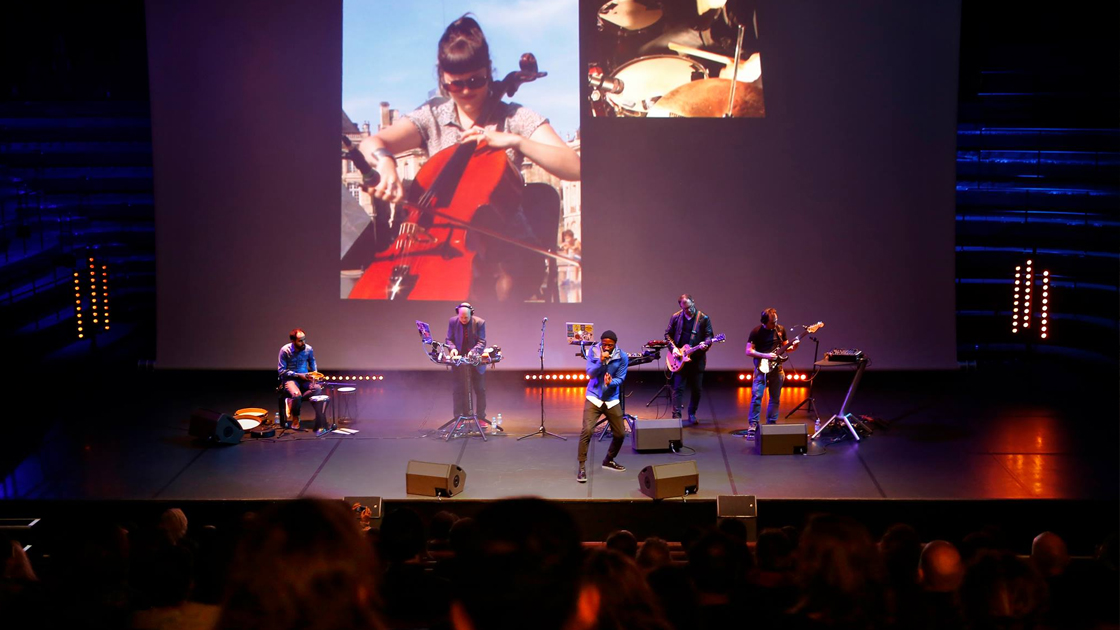
I believe Orchestra Of Samples works so well because music is a universal language. The world’s many different musical cultures share the same fundamental human roots—no matter who you are or where you come from, it’s all about sounds and the emotions they evoke.
Orchestra Of Samples has grown into a multi-faceted “supergroup” that is both local and global. As it has evolved, the project has built bridges between the traditional and the contemporary, uniting people from different generations and cultures. The journey has been a truly enlightening experience, a way of rethinking how people from different backgrounds can work together, and the ways in which music can be created.
In a world where blinkered nationalism is on the rise, we believe it is crucial to break down barriers, encourage a dialogue between different musical cultures, and stimulate our curiosity and desire to understand each other better. The philosophy behind the project is perhaps best summed up by one of the track titles from the album Orchestra Of Samples—it’s simply called “Unity Through Music.”
In their work, Addictive TV delve deep into movies and videos hunting for sounds and images to sample, creating music that fuses everything from electronic to rock. They create their music by keeping the audio and video samples together.
In their work, Addictive TV delve deep into movies and videos hunting for sounds and images to sample, creating music that fuses everything from electronic to rock. They create their music by keeping the audio and video samples together.
